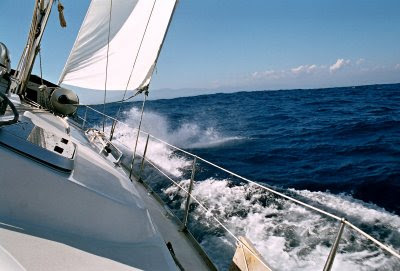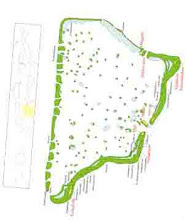
“Let's begin at the beginning, with Chile, that remote land that few people can locate on the map because it's as far as you can go without falling off the planet. Why don't we sell Chile and buy something closer to Paris? one of our intellectuals once asked. No one passes by casually, however lost he may be, although many visitors decide to stay forever, enamored of the land and the people. Chile lies at the end of all roads, a lance to the south of the south of America, four thousand three hundred kilometers of hills, valleys, lakes, and sea. This is how Neruda describes it in his impassioned poetry:
Night, snow and sand compose the form
of my slender homeland,
all silence is contained within its length,
all foam issues from its seaswept beard,
all coal fills it with mysterious kisses.
This elongated country is like an island, separated on the north from the rest of the continent by the Atacama Desert - the driest in the world, its inhabitants like to say, although that must not be true, because in springtime parts of that lunar rubble tend to be covered with a mantle of flowers, like a wondrous painting by Monet. To the east rises the cordillera of the Andes, a formidable mass of rock and eternal snows, and to the west the abrupt coastline of the Pacific Ocean. Below, to the south, lie the solitudes of Antarctica.”
From "My Invented Country: A Memoire". Isabel Allende
Allende’s love for Chile is so evident and eloquent that many readers will consider packing their bags and booking the next flight to Santiago. That was what I did!

 In 1997 I did a study trip to Egypt with a group of 29 stagiares from the European Commission. In our group, we had nice Australian fellow (nicked name as the Antipodean), who had the energy to write a trip diary. Allow me to share a few parts of it. Before that, simply words about Esna: The present Egyptian village of Esna, which was ancient Iunyt or Ta-senet (from which the Coptic Sne and Arabic Isna derive), was built in the area of ancient Latopolis and is the site of a major temple dedicated to the god Khnum. Under the Greeks and Romans, the city became the capital of the Third Nome of Upper Egypt. Besides Khnum, the temple was dedicated to several other deities, the most prominent of whom were Neith and Heka. Esna is located on the Nile about fifty kilometers south of Luxor. The temple now stands in the middle of the modern town at a level about nine meters below that of the surrounding grounds and the temple Khnum is the major (unique) attraction of Esna.
In 1997 I did a study trip to Egypt with a group of 29 stagiares from the European Commission. In our group, we had nice Australian fellow (nicked name as the Antipodean), who had the energy to write a trip diary. Allow me to share a few parts of it. Before that, simply words about Esna: The present Egyptian village of Esna, which was ancient Iunyt or Ta-senet (from which the Coptic Sne and Arabic Isna derive), was built in the area of ancient Latopolis and is the site of a major temple dedicated to the god Khnum. Under the Greeks and Romans, the city became the capital of the Third Nome of Upper Egypt. Besides Khnum, the temple was dedicated to several other deities, the most prominent of whom were Neith and Heka. Esna is located on the Nile about fifty kilometers south of Luxor. The temple now stands in the middle of the modern town at a level about nine meters below that of the surrounding grounds and the temple Khnum is the major (unique) attraction of Esna.





























